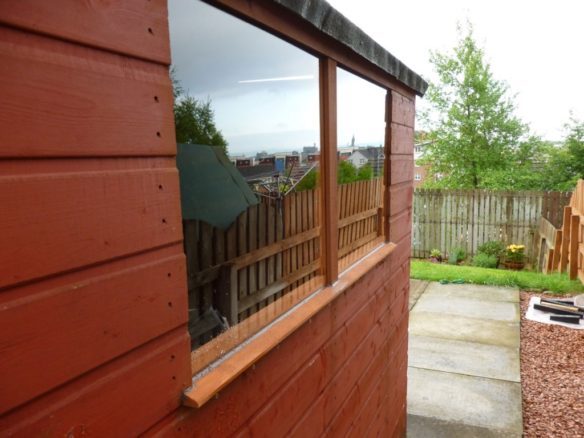

Acrylic and glass are both popular options for greenhouse glazing, but they each have their own unique advantages and disadvantages. In this blog post, we will compare and contrast these two materials to help you decide which one is the best choice for your greenhouse.
Clear Acrylic, also known as polymethyl methacrylate (PMMA), is a type of plastic that is known for its strength and transparency. It is often used in applications where high impact resistance and clarity are important, such as in windows, skylights, and greenhouse glazing. Acrylic is also UV-resistant, which means that it won’t yellow or become brittle over time when exposed to sunlight.
One of the main advantages of using acrylic for greenhouse glazing is that it is much lighter than glass. This makes it easier to install and reduces the stress on the greenhouse frame. Acrylic is also less expensive than glass, which makes it a more affordable option for greenhouse construction. Additionally, acrylic is flexible and can be bent or moulded into a variety of shapes, which makes it a versatile material for greenhouse design.
Glass is a tried-and-true material that has been used for centuries in construction and other applications. It is known for its durability, transparency, and heat resistance, which makes it a popular choice for greenhouse glazing. Glass is also relatively easy to clean and maintain, and it doesn’t yellow or become brittle over time like acrylic can.
One of the main advantages of using glass for greenhouse glazing is its durability. Glass is slightly stronger than acrylic and is less likely to scratch. It is also more heat-resistant, which means that it can provide better insulation for your greenhouse. Additionally, glass is highly transparent, which allows more light to enter the greenhouse and can help to improve plant growth.
However, there are some downsides to using glass for greenhouse glazing. Glass is much heavier than acrylic, which makes it more difficult to install and can put additional stress on the greenhouse frame. It is also more expensive than acrylic, which can make it a cost-prohibitive option for some greenhouse builders. Additionally, glass is not as flexible as acrylic, which can limit the design options for your greenhouse.
In conclusion, both acrylic and glass have their own unique advantages and disadvantages when it comes to greenhouse glazing. Acrylic is lighter, less expensive, and more flexible than glass, but it is also less durable and less heat-resistant. Glass, on the other hand, is stronger, more heat-resistant, and more transparent, but it is also heavier and more expensive. Ultimately, the best choice for your greenhouse will depend on your specific needs and budget.
Advantages of Glass vs Acrylic
- Lighter and stronger than glass
- More impact-resistant and flexible
- Better insulator than glass
- Easy to cut and install
- Less expensive than glass


